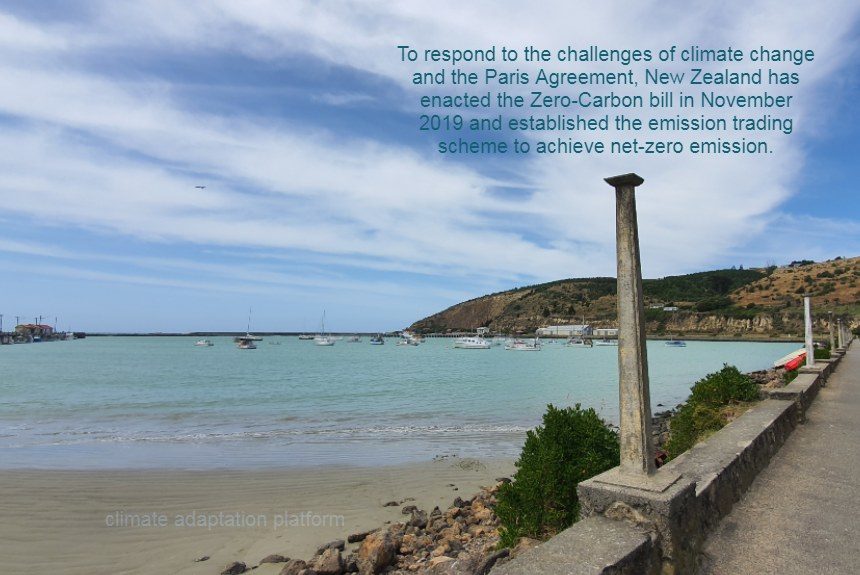To address the challenges of climate change and the Paris Agreement, New Zealand enacted the Zero Carbon Bill in November 2019. This bill would serve as a framework to reduce greenhouse gas emissions, including methane, and achieve net-zero emissions by 2050. The government would also create policies on climate adaptation and mitigation (Climate change response, n.d.).
How NZ would reach net-zero emissions
There are several ways for New Zealand to reach net-zero emissions. A news article identifies seven changes that New Zealand can make to reach this goal, such as:
- The conversion of vehicles to electric,
- eliminating fossil fuel industries that need heating up to 300°C,
- double the electricity production without using fossil fuels,
- more research on how to reduce the amount of nitrogen that gets converted to nitrous oxide in animal urine, and
- to reduce the amount of methane ruminants produce and to plant enough trees to cover the emissions gap.
New Zealand is already on the right track in using renewable energy for electricity. Eighty-one per cent of all electricity is produced primarily from hydroelectricity (58%), geothermal (18%), and the rest from gas (16%), wind (5%), and coal at 3% (MacManus, 2019).
Some industries, such as the dairy industry, use coal to heat milk because it is a cheaper fuel option; however, coal emits carbon dioxide.
The government allows companies, such as the dairy industry, to purchase unlimited carbon credits to offset emissions at a fixed price of $25 per tonne. The Productivity Commission believes that carbon credits must reach at least $75 per tonne for companies to seriously consider using low-emissions technology (MacManus, 2019).
While it is not practical for some industries to switch to low-emission technology because their current machines still have several years of life left, and replacing them would be very costly, others are switching to low-emission technology for ethical reasons. It is probably time for a scheduled replacement (MacManus, 2019).
What does net-zero emissions mean?
Achieving a net-zero status means that an organisation, in this case, a country, has completed an overall balance between emissions produced and emissions removed from the atmosphere, becoming carbon-neutral (Burke, 2019).
The New Zealand Emissions Trading Scheme (NZ ETS) is the government’s tool to meet climate change targets and to encourage entities and individuals to reduce GHG emissions.
How does the NZ ETS work?
Trading involves the government, eligible foresters, and businesses or entities that want to offset their emissions.
The government provides eligible foresters with units for the CO2 absorbed by their trees, which they can sell on the NZ ETS market. Businesses with surrender obligations or legal requirements to surrender their units must purchase enough units to cover their emissions. These units are then surrendered to the government.
A New Zealand Unit (NZU) is equivalent to one metric tonne of carbon dioxide or the amount of GHG that does as much damage as one tonne of carbon dioxide (About the New Zealand, 2019).
However, it is up to the emitter to decide whether to reduce their emissions or purchase units. The price for the units is the carbon price, which is set by the supply and demand rule (About the New Zealand, 2019).
Motu Economic and Public Policy Research has released a guide to the New Zealand Emissions Trading Scheme. The guide explains how the NZ ETS operates, describes the system, and outlines its evolution over time.
To learn more about the New Zealand ETS, visit the link below:
Sources:
Climate Change Response (n.d.). New Zealand Parliament. Retrieved from https://www.parliament.nz/en/pb/bills-and-laws/bills-proposed-laws/document/BILL_87861/climate-change-response-zero-carbon-amendment-bill
Burke, J. (2019, May 2). What does net zero mean? Green Biz. Retrieved from https://www.greenbiz.com/article/what-does-net-zero-mean
About the New Zealand Emissions Trading Scheme. (2019, December 18). Ministry for the Environment. Retrieved from https://www.mfe.govt.nz/climate-change/new-zealand-emissions-trading-scheme/about-nz-ets
Leining, Catherine and Suzi Kerr. 2018. A Guide to the New Zealand Emissions Trading Scheme. Report prepared for the Ministry for the Environment. Wellington: Motu Economic and Public Policy Research. Retrieved from https://motu.nz/assets/Documents/our-work/environment-and-agriculture/climate-change-mitigation/emissions-trading/ETS-Explanation-August-2018.pdf



Leave a Reply